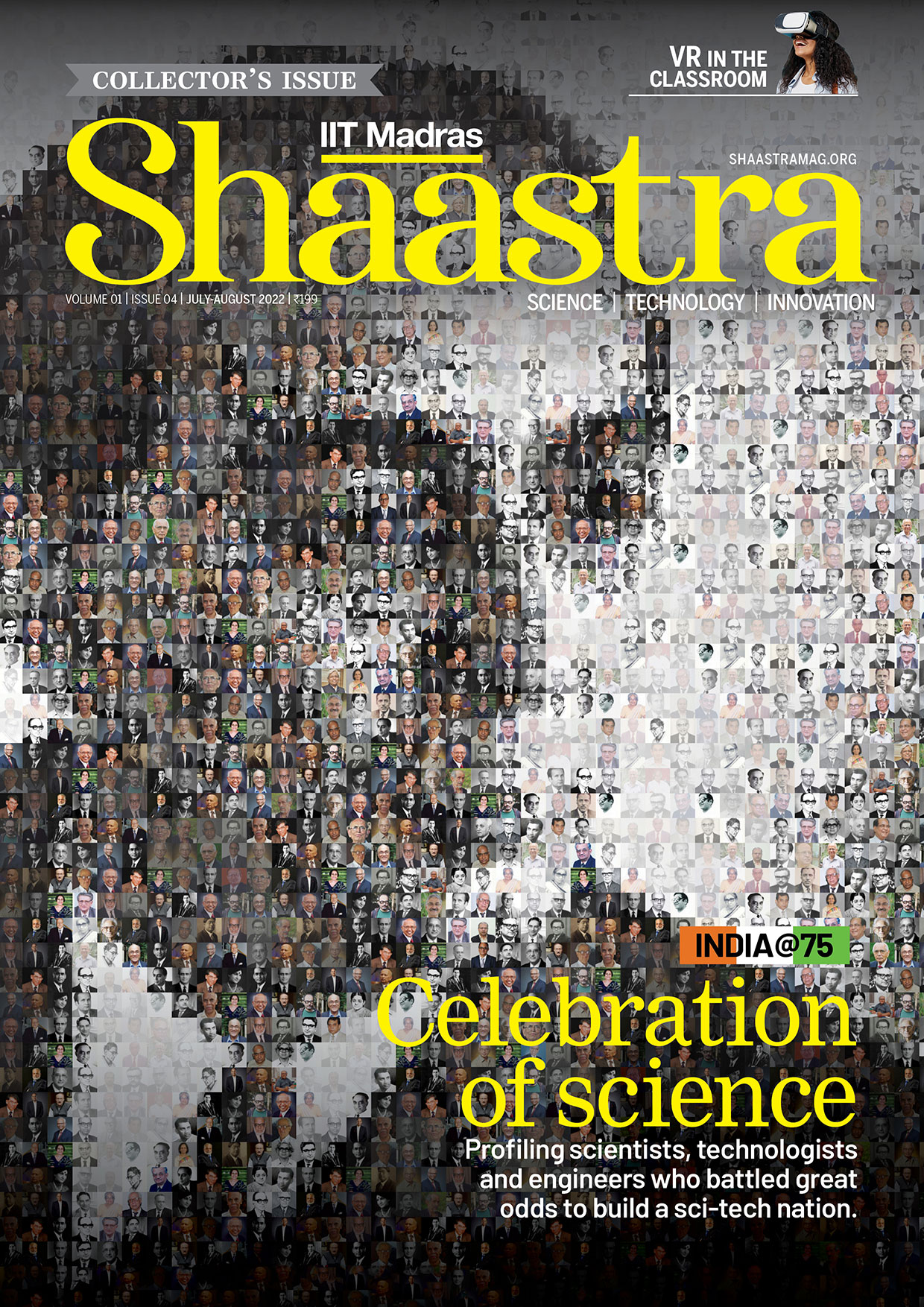For the long haul
-
- from Shaastra :: vol 02 issue 05 :: Sep - Oct 2023

Efforts at building quantum computers and communications are taking root in India, overcoming the struggles of the early movers in the field.
Among the several scientific institutions in Bengaluru, the Raman Research Institute (RRI) is one of the smallest. Its campus covers just 22 acres, with a few ageing red brick buildings, a lawn and some very tall trees. It has roughly 25 professors. The small size of RRI restricts the breadth of its research, but its scientists have tried to compensate for that by focusing on a few high-potential areas, the nature of which has changed through the institute's history based on the interests of its leadership. And, sometimes, on who is willing to work in such a small centre.
Urbasi Sinha joined RRI in 2012 and was given a tiny room in the basement for her laboratory, below a large telescope that was never installed in the field after construction. Sinha had switched fields after a PhD, from high-temperature superconductivity to quantum devices, and was working at the Institute for Quantum Computing in Waterloo, Canada, when she moved to Bengaluru. Until then, no one in RRI had worked on quantum technology. Across the country there were only a few dedicated researchers in this field. Sinha had to set up a laboratory from scratch.
She managed to establish a clean room in the institute and made visible progress within the year. By the end of 2012, she had set up the equipment to create a single photon source, a piece of equipment that emits light as single photons. She had also found ways to entangle two photons, by making them act as one particle even at a distance, a useful technique for secure quantum communications. Progress was slow after that, as quantum researchers in India struggled for funding. "Many people were either unconvinced that the experiments would work or were downright laughing at the effort," Sinha says. The turning point came in 2017.
In August 2016, China launched a satellite exclusively to do quantum experiments. In 2017, scientists in China succeeded in sending a pair of entangled photons from the satellite to two different ground stations, with the photons remaining entangled at a separation of 1,200 kilometres. Entanglement is a key quantum effect, and quantum technology researchers got a shot in the arm when the Chinese demonstrated its possibilities. In India, the small group of researchers working in the field were no longer seen as chasing wild dreams. Within two years, the Department of Science and Technology had started a programme to fund research in some areas of technology based on quantum effects.
PAST ISSUES - Free to Read


Have a
story idea?
Tell us.
Do you have a recent research paper or an idea for a science/technology-themed article that you'd like to tell us about?
GET IN TOUCH














